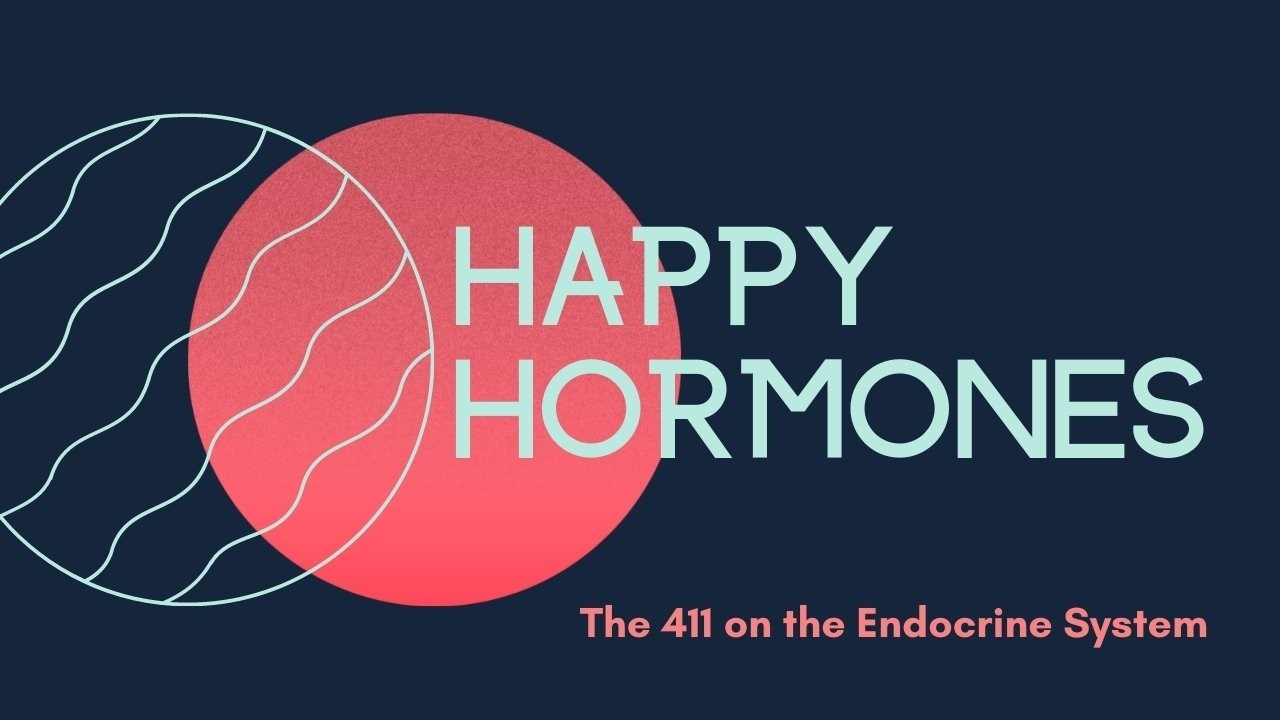
happy hormones
May 09, 2021The endocrine system is a network of glands and hormones that work in a feedback loop to trigger the secretion or suppression of hormones. Endocrine glands produce, store, and release hormones, while hormones are the chemical messengers that target specific tissues and organs.
HORMONE COMMUNICATION
Endocrine glands are located throughout the body and release hormones in response to a message sent by the pituitary gland. The pituitary gland is often referred to as the “master gland” as it’s constantly sending out messages. However, the real credit goes to the hypothalamus as it is the command center of the body. It is receiving internal and external messages as to which hormones need to be “turned on" or “turned off" through a negative feedback loop. The hypothalamus then sends a message to the pituitary with instructions for what the body needs. Let me explain.
hormone negative feedback loop
Most hormones of the body are controlled by negative feedback loops. When a hormone level is low, the hypothalamus will receive an internal or external message and send the appropriate hormone to the pituitary, and the pituitary sends the appropriate hormones to the appropriate gland to increase the level.
Sometimes this happens quickly, like with cortisol to save your life while being chased by a bear, while others happen more slowly, like with the menstrual cycle.
Estrogen rises from days 7-14 as an egg matures to trigger the luteinizing hormone to trigger ovulation before it drops and slowly rises again before falling again to trigger menstruation. Ladies, the hormones fluctuate day to day for 26ish-35ish days through the 4 phases of the menstrual cycle before it starts all over again. Guys, your dial resets every 24 hours.
Complex, right?!
the affect of hormones on the body
Hormones affect and play an intricate role in many bodily functions, including:
-
Metabolism
-
Reproduction
-
Appetite
-
Growth
-
Sleep/wake cycle
-
Body temperature regulation
-
Heartrate
-
Blood pressure
-
Mood
-
Movement
Think of the endocrine system like the furnace in your house. You set a minimum and maximum temperature on the thermostat. When the temperature falls below a certain level, the furnace kicks on and begins to heat the space. When the temperature reaches the maximum set point, the thermostat receives the data and triggers the furnace to stop.
hormone balance
Let’s take, for example, the thyroid. I’ve shared in a prior post about the importance of thyroid hormones. Particularly T3 - the active and most potent form of thyroid hormone. While the thyroid creates T4 and a little T3 when it receives the TSH (Thyroid Stimulating Hormone) signal from the pituitary gland, the conversation of T4 to T3 has to take place in the peripheral tissues through an enzyme reaction.
So what happens if that conversion process is impaired?
T3 remains low throughout the body. Since the command center - the hypothalamus - has not detected appropriate levels of thyroid hormone, it keeps signaling to the pituitary to continue the message to the thyroid. SH levels will increase to stimulate the thyroid to create more hormones. Hence, your T4 levels could look beautiful and within range, and your TSH levels could be elevated. This is where a comprehensive analysis of hormones is essential.
It’s like trying to heat your house while all the doors and windows are open. You wouldn’t just sit there shivering and not close the windows and doors. You would evaluate why this house was cold, the furnace was running nonstop, and your electric bill was through the roof, and make adjustments and/or repairs to support a comfortable temperature in your home.
hormonal imbalance testing
With this amazing, complex network of messages being sent and received, sometimes a message may not be received appropriately, or there may be an impairment of the gland that is sending the message. Then we begin to see hormonal imbalances.
But hormones don’t usually play alone. Hormones influence other hormones and other systems in the body. It’s like they send a text out to all of their other hormone friends and invite them to check out this rad imbalance party happening down the street, and off they go…...
If a woman comes to me with symptoms of irregular periods, breast tenderness, PMS the week before menstruation, and spotting prior to their flow, evaluation of just estrogen would not give us much information at all. Instead, we need to comprehensively evaluate all of the sex hormones and possibly the thyroid, insulin, and cortisol, based on any additional symptoms associated with sleep, energy level, bowel habits/GI symptoms, temperature regulation, and the health of hair, skin, and nails
More often than not, it’s multilayered, and getting that bird’s eye view will provide more data in crafting your wellness journey.
Some of the tests used to evaluate hormones include the DUTCH test (dried urine test of comprehensive hormones), a comprehensive salivary hormone panel, and a serum lab draw.
comprehensive hormone panel
I can’t stress enough the importance of comprehensive lab panels. The data allows for complete evaluation and adjustment of specific areas that might be suboptimal. So many clients come to me frustrated with symptoms, their labs say everything is normal, but they are missing key information that could explain how they are feeling.
Instead of guessing, I will test and use the data and symptoms to guide you on your wellness journey by adjusting nutrition and lifestyle, and supporting you with supplements.
are you overwhelmed by the conflicting information regarding health, hormones, nutrition, and weight management?
Join me once a month for a FREE "Ask Me Anything" live Zoom sesh! I'll answer all the questions you've been spending so much time searching the internet for.








